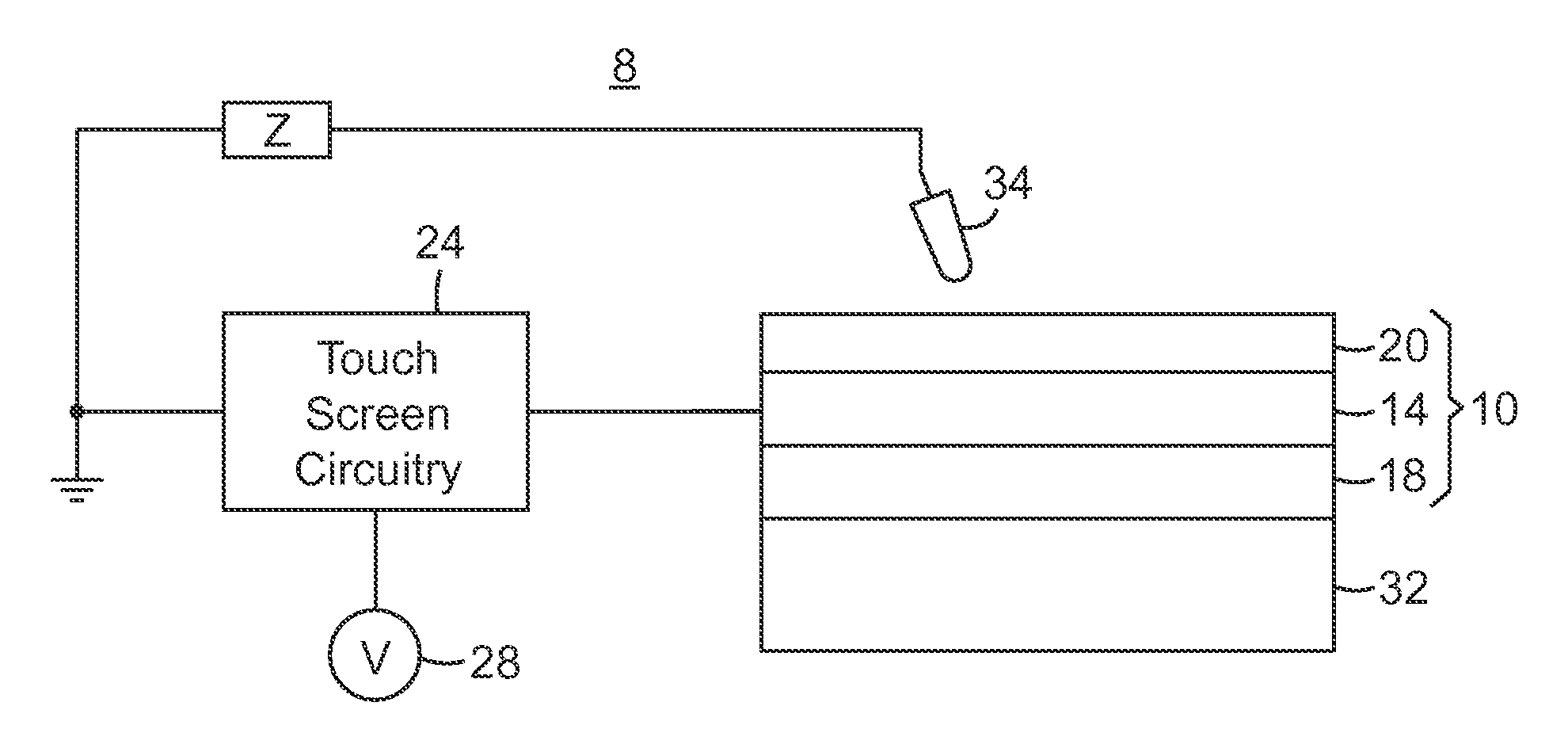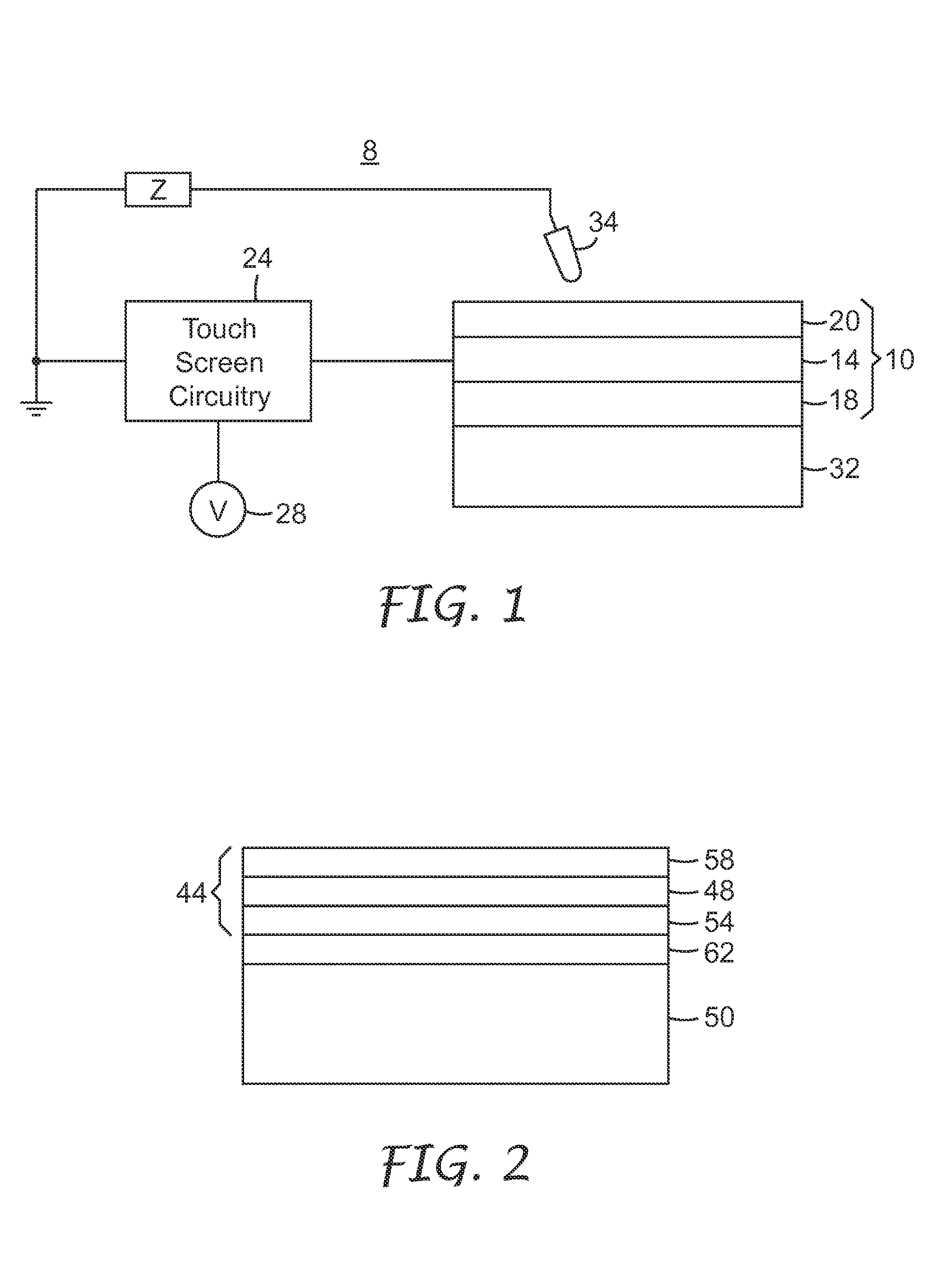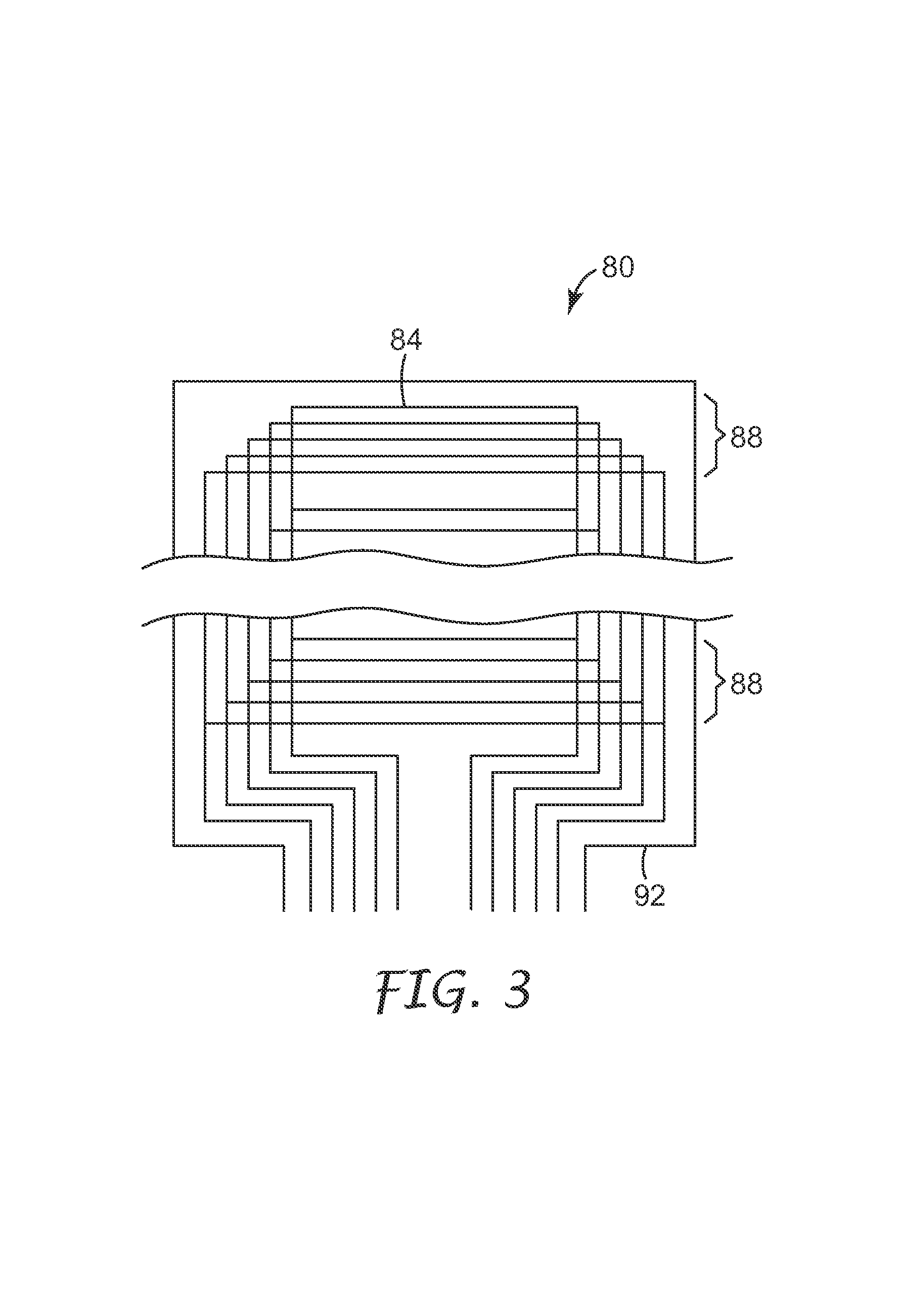Capacitive touch screen with conductive polymer
a capacitive touch and polymer technology, applied in the field of touch sensors, can solve the problems of inability to be durable, uniform or physically continuous, and the tcos of the capacitive touch panel cannot be durable, uniform or physically continuous, and achieve the effect of uniform resistan
- Summary
- Abstract
- Description
- Claims
- Application Information
AI Technical Summary
Benefits of technology
Problems solved by technology
Method used
Image
Examples
example 1
[0040]A conductive polymer solution was prepared by mixing 965.25 grams of Baytron P® PEDOT:PSS solution (Baytron P commercially available from Bayer) with 321.75 grams of dimethyl sulfoxide, 77.4 grams of ethylene glycol, 27 grams of 3-glycidoxypropyltrimethoxysilane, 1600.2 grams of isopropyl alcohol, and 9 grams of Surfynol 61 surfactant (commercially available from Kremer Pigmente). A soda-lime glass substrate was dip coated with the above solution using a precision dip coater at 0.170 inches per second withdrawal speed. The coated substrate was subsequently baked at 85° C. for 6 minutes resulting in a sheet resistance of 2500-3000 ohms / square. Next, a silver-based linearization pattern and wire traces were screen printed on one side of the coated substrate. The printed substrate was then cured at 130° C. for 6 minutes. Next, a protective coating was applied to both sides of the sensor using a silicone modified polyacrylate solution. The coated touch sensors were cured at 66° C....
example 2
[0041]A capacitive sensor was fabricated by screen-printing a linearization pattern and wire traces, using conductive silver ink, onto the surface of an Agfa EL1500 conductive polymer film (commercially available from Agfa-Gevaert N.V.) on PET. The conductive polymer film had an average optical transmission of about 88% and an averaged sheet resistance measured at about 1200 ohms / square. After the printing process the ink was cured at 100° C. for 1 hour. The wire trace lines were electrically isolated from the linearization pattern by CO2 laser ablation of the conductive polymer coating. The sensor was cut to its final shape using a CO2 laser that cut through both the conductive polymer coating and the PET substrate. A vertical and horizontal finger drawing on the sensor produced a maximum line deviation of 1%.
PUM
 Login to View More
Login to View More Abstract
Description
Claims
Application Information
 Login to View More
Login to View More - R&D
- Intellectual Property
- Life Sciences
- Materials
- Tech Scout
- Unparalleled Data Quality
- Higher Quality Content
- 60% Fewer Hallucinations
Browse by: Latest US Patents, China's latest patents, Technical Efficacy Thesaurus, Application Domain, Technology Topic, Popular Technical Reports.
© 2025 PatSnap. All rights reserved.Legal|Privacy policy|Modern Slavery Act Transparency Statement|Sitemap|About US| Contact US: help@patsnap.com



